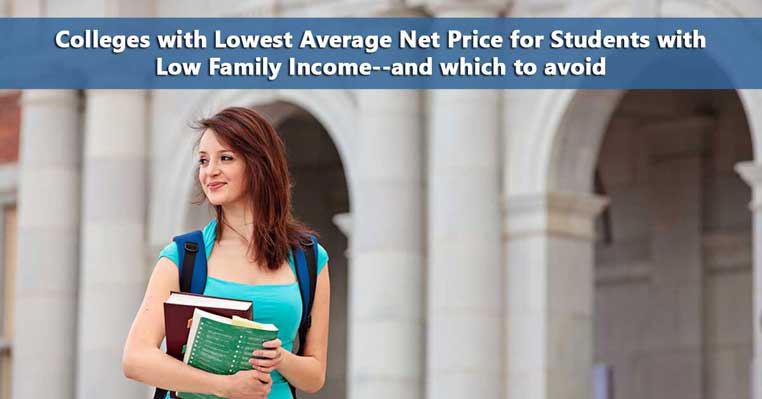 (Updated 2023) The National Merit Scholarship® Program seems like a great opportunity for test savvy high school students and their families to make a substantial dent in college costs. Well, it really all depends. Much to the surprise of many families, being a National Merit® Finalist doesn’t mean a full-ride scholarship to the college of your choice.
(Updated 2023) The National Merit Scholarship® Program seems like a great opportunity for test savvy high school students and their families to make a substantial dent in college costs. Well, it really all depends. Much to the surprise of many families, being a National Merit® Finalist doesn’t mean a full-ride scholarship to the college of your choice.
50-50 College Highlights
5 Essential Framingham State University Facts

Framingham State University -Public
Framingham, Massachusetts (Boston-Cambridge-Newton, MA-NH CBSA)
4,876 (3,520 undergraduates)
Does College Size Matter?
50-50 Colleges: 600 Schools You Can Get Into and Graduate From
 (Updated for 2022) I just finished updating the list of 50-50 colleges with the latest IPEDS data release and, as usual, thought I would share some statistically non-significant (as far as I know) observations. For those who don’t know what I mean by 50-50 colleges, these are colleges that accept at least 49% of students and have at least a 49% graduation rate. There are currently 600 such institutions with at least 500 or more full-time undergraduates up from the previous year’s 561.
(Updated for 2022) I just finished updating the list of 50-50 colleges with the latest IPEDS data release and, as usual, thought I would share some statistically non-significant (as far as I know) observations. For those who don’t know what I mean by 50-50 colleges, these are colleges that accept at least 49% of students and have at least a 49% graduation rate. There are currently 600 such institutions with at least 500 or more full-time undergraduates up from the previous year’s 561.
50-50 Highlights: Colleges in Chicago
 Students looking for the big city attractions shouldn’t overlook colleges in Chicago. It’s the 3rd largest city in the United States and has all the expected amenities to go with it. There are 39 colleges with at least 500 full-time undergraduates in the Chicago Core Based Statistical Area (CBSA). While 14 of them are 50-50 colleges, unfortunately only one is a public institution.
Students looking for the big city attractions shouldn’t overlook colleges in Chicago. It’s the 3rd largest city in the United States and has all the expected amenities to go with it. There are 39 colleges with at least 500 full-time undergraduates in the Chicago Core Based Statistical Area (CBSA). While 14 of them are 50-50 colleges, unfortunately only one is a public institution.
50-50 Highlights: Colleges with Cross Registration
 College consortiums offers students the opportunity to take classes at participating colleges through a cross registration system. Students don’t have to go through the admissions and enrollment process at the other college. Through various options, they are allowed to register for a course at an institution on the consortium lists while only paying tuition at their home school. These programs can dramatically expand the courses available to students as well as networking opportunities.
College consortiums offers students the opportunity to take classes at participating colleges through a cross registration system. Students don’t have to go through the admissions and enrollment process at the other college. Through various options, they are allowed to register for a course at an institution on the consortium lists while only paying tuition at their home school. These programs can dramatically expand the courses available to students as well as networking opportunities.
50-50 Highlights: 40 Colleges for High-Income Families–and 40 Colleges to Avoid
 Families are told not to avoid private colleges and universities because of their high sticker prices. The fact is that very few people pay the actual sticker price. This includes families in the highest income category since most private colleges provide financial aid for high income families in the form of tuition discounting more commonly known as “merit aid.” However, some 50-50 schools are more likely to offer merit aid than others. This means that some colleges will be much more affordable for high income families than others–assuming the student qualifies for merit aid.
Families are told not to avoid private colleges and universities because of their high sticker prices. The fact is that very few people pay the actual sticker price. This includes families in the highest income category since most private colleges provide financial aid for high income families in the form of tuition discounting more commonly known as “merit aid.” However, some 50-50 schools are more likely to offer merit aid than others. This means that some colleges will be much more affordable for high income families than others–assuming the student qualifies for merit aid.
50-50 Highlights: Colleges for Students with Disabilities
 (Updated for 2019) Attempting to list colleges and universities with the best services for students with disabilities ultimately demonstrates the problems in creating a list of the “best” of anything. When dealing with disabilities, so much depends on the individual needs of the students so what is ideal for one student won’t work for another. Never mind the fact that an institution’s approach to accommodating students can also heavily rely on one or two persons’ attitudes.
(Updated for 2019) Attempting to list colleges and universities with the best services for students with disabilities ultimately demonstrates the problems in creating a list of the “best” of anything. When dealing with disabilities, so much depends on the individual needs of the students so what is ideal for one student won’t work for another. Never mind the fact that an institution’s approach to accommodating students can also heavily rely on one or two persons’ attitudes.
50-50 Highlights: NAIA Colleges
 The NCAA is not the only college athletic organization with sports programs. The National Association for intercollegiate Athletics (NAIA) has over 250 members. Like the NCAA, the NAIA regulates the number of scholarships available and students must register with the NAIA Eligibility Center.
The NCAA is not the only college athletic organization with sports programs. The National Association for intercollegiate Athletics (NAIA) has over 250 members. Like the NCAA, the NAIA regulates the number of scholarships available and students must register with the NAIA Eligibility Center.
NAIA offers fewer sports than the NCAA but does offer more scholarships in some sports. The maximum number of scholarships allowed in baseball, men’s golf, men’s soccer, and men’s tennis are higher in the NAIA. The NCAA offers more scholarships in women’s sports compared to the NAIA.
50-50 Highlights: Colleges for Low-Income Students–and which to avoid
 (Updated for 2019) Robert J. Kibbee, the former Chancellor of City University New York, observed “Over the years, we have come to identify quality in a college not by whom it serves but by how many students it excludes. Let us not be a sacred priesthood protecting the temple, but rather the fulfillers of dreams.” And if the dreams fulfilled aren’t going to be determined by family income, colleges are going to need to provide substantial financial aid to the neediest students.
(Updated for 2019) Robert J. Kibbee, the former Chancellor of City University New York, observed “Over the years, we have come to identify quality in a college not by whom it serves but by how many students it excludes. Let us not be a sacred priesthood protecting the temple, but rather the fulfillers of dreams.” And if the dreams fulfilled aren’t going to be determined by family income, colleges are going to need to provide substantial financial aid to the neediest students.










